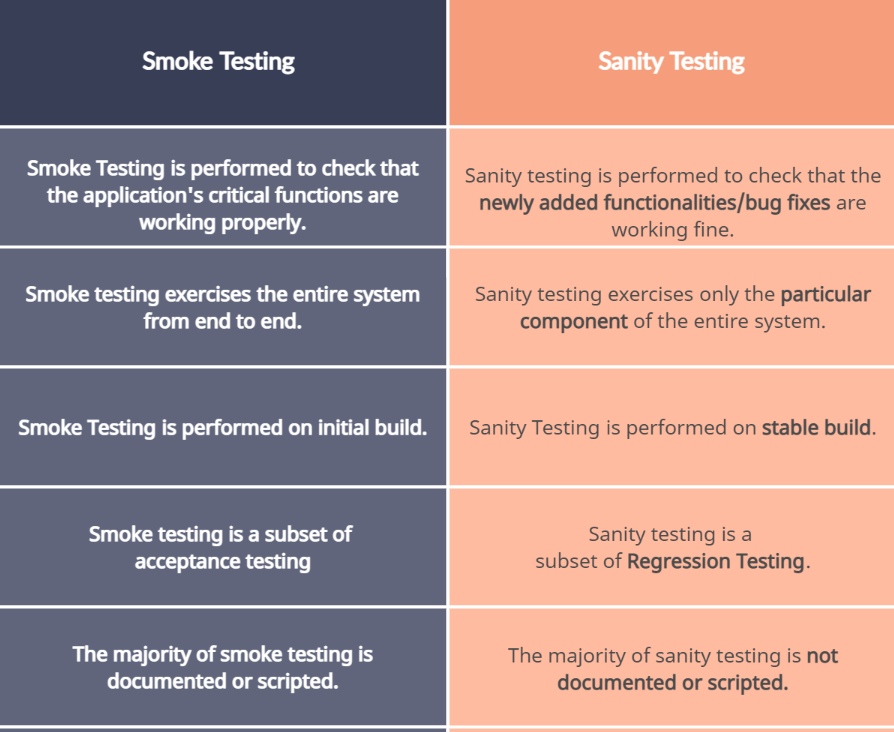Apr, 26 2022
The Difference Between Smoke Testing and Sanity Testing
Erhan Aksungur
Software Test Engineer
Software Test Engineer
Since there are some similarities between smoke testing and sanity testing, there is some misunderstanding that they are the same. However, in practice, both types of testing are carried out differently and at separate times within the testing cycle. We'll look at what sanity testing and smoke testing are in software testing and try to clear up some of the confusion in this article.
Before performing extensive functional or regression tests, smoke testing is used to ensure that an application's fundamental and key functions are working properly. The primary purpose of smoke testing is toreject a software program that has defects so that the QA team does not waste time evaluating it. The test cases in Smoke Testing are intended to cover the most critical functionality or component of the system. Only positive cases are tested during the smoke test, so we can only enter legitimate data.
Sanity testing is typically performed on stable builds with minimal code or functionality changes to ensure that defects have beenfixed and that no new issues have arisen as a result of the changes. If the sanity test fails, the build is denied to avoid the additional expenses andeffort involved in more thorough testing.

Conclusion
Sanity and Smoke testing are two methods for saving time and effort by immediately determining whether an application is worthfurther testing. We can execute smoke or sanity testing in a similar softwarebuild, depending on the software's requirements. In this circumstance, we'll start with the Smoke tests and then go on to the Sanity tests.
Stay up to date with the latest on healthcare, fintech, logistics and e-commerce news.